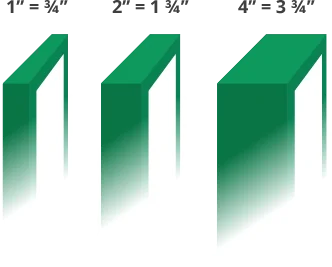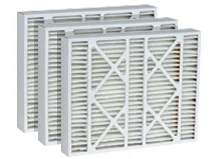Electret vs. Electrostatic Air Filters: Finding the Perfect Fit for Cleaner, Healthier Air
Imagine you're relaxing at home, confident that your air is clean. But is your filter pulling its weight? Enter electret and electrostatic air filters—two heroes fighting for cleaner indoor air. Both promise to improve your air quality, but they work differently. So, which one's the star player for your space? Let's break it down and determine which filter best suits your needs.
Key Takeaways:
- Electret filters use permanently charged fibers to capture fine particles like dust and pollen, offering high filtration efficiency with minimal airflow resistance.
- Electrostatic filters rely on dynamic charges to attract and trap particles using ionization and charged plates.
- Electret filters need replacement every 3-6 months, while electrostatic filters are reusable with regular cleaning.
Electret filters are like the air filter version of a seasoned pro—they keep working smoothly even when the heat and humidity crank up. Electrostatic filters? Not so much. Each filter has strengths, but choosing the right one depends on a few things. Are you after air so clean you could almost taste the difference, or are you more concerned with keeping things within budget? And let’s face it—how much effort will you put into maintenance? One filter may rise to the occasion if you’re all about effortless, top-notch performance. But if you’re okay with a little upkeep in exchange for savings, the other could be the perfect fit. It’s all about balancing clean air, cost, and care.
What is an Electret Filter?
Think of electret filters as the powerhouses of air filtration. They use fibers with a permanent electrostatic charge to grab onto fine particles like dust, pollen, and even some airborne bacteria. It's almost like the particles get magnetically pulled out of the air, leaving it cleaner to breathe without making your HVAC system work overtime.
Studies back it up—electret filters do a great job capturing tiny dust particles, and they don't slow down airflow, so your system keeps running efficiently. And here's the best part: humidity and high temperatures? Not a problem. These filters keep their cool, making them perfect for homes needing reliable air quality control, regardless of the weather.
Do Electrostatic Air Filters Work?
Electrostatic air filters work, but they operate quite differently from their electret counterparts. Unlike permanently charged fibers, electrostatic filters actively generate a static charge as the air passes. This process begins in the ionizing section, where particles receive a positive charge from a high-voltage corona discharge. The charged particles are then drawn to a collector section—a series of metal plates with an opposite charge—where they stick.
Electrostatic filters may sound like a win with their reusability and lower upfront cost, but there's a catch: they need regular cleaning to stay efficient. Think of them as the type of filter that likes attention. They're great at grabbing bigger particles like dust and pollen, but things get tricky when the air gets humid. Moisture can mess with the static charge, making these filters less effective in damp conditions.
Performance Showdown: Electret vs. Electrostatic
When it comes to air quality, electret filters are the MVP. They capture particles as tiny as 0.3 microns—perfect for homes battling allergens, dust, or even sneaky airborne pathogens. Plus, they’re the low-maintenance type. They don’t lose their charge, meaning they work consistently without needing much from you. Set it and forget it? Pretty much.
Electrostatic filters, conversely, are like the workhorses of air filtration, charging up as air flows through to catch dust and larger particles. But here’s the catch: they’re not huge fans of humidity. When the air gets moist, their efficiency takes a dip, and if you skip the monthly cleanings, they don’t perform at their best. They can be a solid budget-friendly choice if you’re looking to save a little upfront and don’t mind giving them some regular TLC. Just be aware—if you live in a humid area, they might not be your ideal match.
How Long Do They Last?
Think of electret filters like that dependable coffee maker—you don't notice how much you rely on it until it's time for a change. These filters quietly work in the background, keeping your air clean for about 3 to 6 months. But if you've got furry friends shedding around the house or live in a city with more pollution, you might need to switch them out a bit sooner. The more dust and dander they catch, the quicker they'll need replacing to keep your air fresh and your HVAC running smoothly.
Electrostatic filters, on the other hand, are reusable. You don't need to buy new ones often, but they demand some love—monthly cleaning is a must to keep them working their magic. Stay on top of that routine; these filters can stick around for years.
Choosing the Right Filter
Think about this: you've just finished cleaning the house, but the air still feels stale. No matter how spotless things look, something's missing—fresh, clean air. This is where choosing the right filter changes the game. It's not just about eliminating dust you can see; it's about filtering the unseen particles that make your home feel fresher and healthier so every breath you take feels as clean as the surfaces you've scrubbed.
If you like things running smoothly without fuss, an electret filter could be your best friend. Think of it as the quiet overachiever in the background—capturing everything from dust to pollen, letting you enjoy fresher air without needing to check or replace it constantly. Busy household? Pets or allergy sufferers? This filter’s efficient, low-maintenance design means fewer worries—no constant swaps required.
Or maybe you love a smart investment and don’t mind a bit of hands-on care. Enter the electrostatic filter, which is budget-friendly and reliable. It keeps your air fresh if you roll up your sleeves for regular TLC. It’s an affordable option that works well, provided you don’t mind extra maintenance.
A quick monthly clean, and it's back to work, filtering out the bigger stuff like dust and pollen. If you're not too concerned with catching every microscopic particle, this filter is a practical, no-fuss option that fits right into your routine.
So, Are They Worth It?
Here’s the deal: electret and electrostatic filters pack their punch, but which one shines depends on what you’re after. Want premium air filtration without the hassle? Electret filters are your go-to. These hardworking filters quietly do their thing, giving you crisp, clean air with zero fuss. They’re perfect for households where allergies rule the roost or if you’re simply after the best indoor air quality with minimal effort. Set it, forget it, and breathe easy—no maintenance marathon required.
But let’s say you’re the DIY type, happy to rinse out a filter once a month and keep a little extra cash in your pocket. That’s where the electrostatic filter shines—reusable, affordable, and reliable. Sure, electrostatic filters might not be humidity’s best friend, but for many homeowners, they still get the job done.
Think of it this way: every breath you take in your home should feel like a deep sigh of relief. When the air’s clean, the place feels lighter—fewer sneezes, easier breathing, and a vibe that makes everything feel fresher. Whether you opt for the hassle-free convenience of electret filters or the hands-on savings of electrostatic, you’re not just filtering dust—crafting a space that breathes life into everyone under your roof. Clean air doesn’t just happen; you make a choice, and your home will thank you for it.
Frequently Asked Questions
How does an electret filter work?
An electret filter uses fibers with a permanent electrostatic charge, drawing in and capturing particles like dust and pollen. Thanks to this electrostatic charge, the filter can trap smaller particles slipping past regular mechanical filters, giving you cleaner air with less effort.
What is an electrostatic filter?
An electrostatic filter uses media layers to generate static electricity, which pulls in airborne particles. It works like a magnet for dust, pollen, and other contaminants, helping improve the air quality in your home by trapping them as air flows through.
What is the difference between a HEPA filter and an electrostatic filter?
HEPA filters physically trap particles as small as 0.3 microns with up to 99.97% efficiency, while electrostatic filters rely on static electricity to capture particles. HEPA is best for smaller particles, but electrostatic filters are reusable and offer a different approach to air filtration.
What are the benefits of an electrostatic air filter?
Electrostatic air filters help reduce allergens in your home and can be reused, making them an eco-friendly choice. They’re a cost-effective way to keep your air clean while producing less waste than disposable filters.
What does an electret do?
An electret is a material with a permanent electric charge that enhances a filter’s ability to trap airborne particles. In-air filters boost particle capture efficiency, helping to clean the air more effectively.
What is the purpose of electronic filters?
Electronic filters, like electrostatic ones, aim to improve indoor air quality by using electrostatic forces to capture contaminants such as dust, pollen, and smoke. This ensures cleaner air in your home.
What are the cons of an electrostatic filter?
While reusable and cost-effective, electrostatic filters aren’t as efficient at capturing the tiniest particles as HEPA filters, they also need regular cleaning to maintain performance, and some models may produce small amounts of ozone.
How long do electrostatic filters last?
With regular cleaning and proper care, electrostatic filters can last several years—sometimes up to five years or more.
How to use an electrostatic filter?
Install the electrostatic filter into your HVAC system or air purifier according to the manufacturer’s instructions. Check it periodically and clean it as needed to ensure it’s functioning correctly.
Do I need an electrostatic filter?
If you want a reusable, budget-friendly filter to help reduce allergens and improve air quality, an electrostatic filter could be a great option. However, consider how it compares to other filters based on your needs.
Is there any filter better than HEPA?
HEPA filters are among the best at capturing ultra-small particles. Some specialized filters, like ULPA filters, offer even higher efficiency, but they’re typically used in environments where top-tier air filtration is critical.
Are electrostatic air filters reusable?
Yes! Electrostatic filters are designed to be reused. Just clean them periodically, and they’ll continue filtering your air, reducing waste and saving you money on replacements.
How often do you need to clean an electrostatic air filter?
It’s best to clean your electrostatic air filter every 1 to 3 months, depending on your home’s air quality and how often your system is used.
What is the MERV rating of an electrostatic filter?
Electrostatic filters usually have a MERV rating between 5 and 8. Some high-performance models can reach MERV 12, offering even more filtration power.
How do you maintain an electrostatic filter?
Maintenance is easy: remove the filter, wash it with water and mild detergent, rinse thoroughly, and let it dry completely before reinstalling. Stick to the manufacturer’s guidelines for optimal performance.

.webp)
.webp)
.webp)
.webp)







